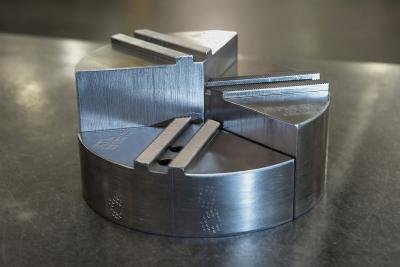
Dillon Manufacturing specializes in premium chuck jaw products for large-diameter (15-60 inch) chucks. Matching specialized workholding to the large diameter chuck allows faster, easier and more profitable setups. Available in standard configurations to fit virtually any chuck manufacturer, many sizes of hard or soft top jaws, or full grip (pie) jaws are available from stock or with industry-leading lead times.
Available in 1018, 1045, 4140, 8620, A-2, 6061 aluminum, and stainless steel. In addition to standard designs, custom jaws with extra height or added width can be manufactured to customer specification using an “easy quote” format with “fill-in-the-blanks” convenience. Dillon standard and custom chuck jaws and collet pads and jaws aresuitable for high-speed machining, as well as precision boring, tapping, drilling and finishing across virtually all industrial markets.
Contact Details
Related Glossary Terms
- boring
boring
Enlarging a hole that already has been drilled or cored. Generally, it is an operation of truing the previously drilled hole with a single-point, lathe-type tool. Boring is essentially internal turning, in that usually a single-point cutting tool forms the internal shape. Some tools are available with two cutting edges to balance cutting forces.
- chuck
chuck
Workholding device that affixes to a mill, lathe or drill-press spindle. It holds a tool or workpiece by one end, allowing it to be rotated. May also be fitted to the machine table to hold a workpiece. Two or more adjustable jaws actually hold the tool or part. May be actuated manually, pneumatically, hydraulically or electrically. See collet.
- collet
collet
Flexible-sided device that secures a tool or workpiece. Similar in function to a chuck, but can accommodate only a narrow size range. Typically provides greater gripping force and precision than a chuck. See chuck.
- tapping
tapping
Machining operation in which a tap, with teeth on its periphery, cuts internal threads in a predrilled hole having a smaller diameter than the tap diameter. Threads are formed by a combined rotary and axial-relative motion between tap and workpiece. See tap.

